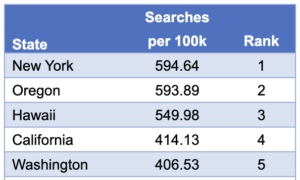After Republicans expelled him, campaign for Tennessee Democratic Rep. Pearson says he raised $860K

NASHVILLE, Tenn. (AP) — Tennessee Rep. Justin Pearson raised about $860,000 through some 31,700 campaign donations after Tennessee Republican lawmakers abruptly moved to expel him and two other Democrats for a gun control protest on the House floor, his campaign said.
The short-lived expulsion propelled the Memphis environmental activist, a fresh face just months into his first term, to become a nationally watched progressive figure who sat in the Oval Office.
His quick fame translated into a wave of campaign cash largely because Republicans opened the door for Pearson and fellow expelled Rep. Justin Jones of Nashville to accept donations from across the country just when the spotlight centered on them. Had Republican lawmakers left the two young Black lawmakers in office, they would’ve been banned from raising cash because a legislative session was ongoing.
Instead, in just two months, Pearson attracted, through average donations of about $27, an amount of campaign cash similar to what the Republican House speaker raised all of last year and into early 2023 through his campaign and his political action committee combined. The vast majority of Pearson’s haul — $814,000 — poured in during the week when he had been kicked out, but not yet reinstated.
“To see so much support, particularly from these tens of thousands of small-dollar donations, is a testament to what I believe is a people-powered movement, which is that we all have something to contribute, and our little bits of contribution makes a lot,” Pearson told The Associated Press.
The preliminary fundraising numbers Pearson’s campaign shared with the AP reveal just a partial picture of how much Democrats were able to capitalize after the Black lawmakers were expelled for protesting for GOP to pass gun control measures after the deadly shooting at a Christian school in Tennessee’s capital city. Their white colleague who joined them in protest, Rep. Gloria Johnson of Knoxville, was spared by a single vote. Local officials reinstated Pearson and Jones within days.
The Jones and Johnson teams have yet to comment on how much they have raised.
Democrats have been relegated to the superminority in both legislative chambers for years, limiting their recourse mainly to complaining when Republicans want to halt debates quickly, or waive other House rules. Pearson and other Democrats hope the fundraising wave can help them cut into that margin.
Kent Syler, a Middle Tennessee State University political science professor, said Pearson’s fundraising could have an impact, and given how very few competitive legislative districts there are in Tennessee — a net gain of even a few seats could be a win for Democrats.
“That amount of money is a testament to, really, how badly this issue went for House Republicans,” Syler said. “It gave Democrats an incredible platform in Tennessee that they haven’t had in a couple of decades.”
Pearson, Jones and Johnson have hit the national TV news circuit, visited President Joe Biden and Vice President Kamala Harris at the White House and made appearances outside Tennessee. Pearson was featured on a recent fundraising email pitch from the Democratic Legislative Campaign Committee, which helps elects state legislative Democrats nationwide.
Democratic U.S. Sen. Chris Murphy, of Connecticut, provided a significant assist. Murphy tweeted a link to a fundraising page in April, and his team said he helped raise more than $605,000 to split between Pearson and Jones.
By comparison, Pearson raised more than $144,000 for his early 2023 win to take office. Tennessee’s House Democratic Caucus, which spreads around its fundraising, raised nearly $233,000 over the 2022 election year into early 2023.
House Speaker Cameron Sexton’s campaign and his political action committee raised more than $830,000 combined in the 2022 election year into early 2023. Over that timeframe, the House Republican Caucus raised more than $448,000.
Reports thoroughly detailing the Democrats’ campaign cash hauls aren’t due until the middle of July, and with both Pearson and Jones heading into special general elections for their seats, only some of the money they have raised has been disclosed in required reports. Those amounts don’t include the few days of fundraising around the expulsions.
Other Democratic fundraising groups could also benefit from the expulsions.
Pearson spokesperson Daphne Thomas said the $814,000 in donations that came in while he was out of office from April 6-April 12 was in addition to nearly $9,000 that came in from the end of legislative session on April 21 through May 2. Additionally, Pearson raised more than $37,000 from May 2 through June 5, his special election campaign finance report shows.
For Jones’ special election, he raised more than $64,000 through more than 1,000 donations from April 21 through June 5, according to his campaign finance report. That does not include donations during the days between his expulsion and his reinstatement by Nashville officials on April 10.
The post After Republicans expelled him, campaign for Tennessee Democratic Rep. Pearson says he raised $860K appeared first on New York Amsterdam News.
Retailers, beware: Resumption of student loan payments could lead some buyers to pull back

WASHINGTON (AP) — The reprieve is over. Just as the American economy is struggling with high inflation and interest rates, the coming resumption of student loan payments poses yet another potential challenge.
The suspension of federal student loan payments, which took effect at the height of the pandemic in 2020, expires late this summer. Interest will start accruing again in September. Payments will resume in October.
Though many hoped their loans might at least be lightened, the Supreme Court last week struck down a Biden administration plan that would have given millions of people some relief from the return of the loan payments. The Biden plan would have canceled up to $20,000 in federal student loans for 43 million borrowers; 20 million would have had their loans erased entirely. The court ruled that the plan exceeded the government’s authority.
The restart of those payments will force many people to start paying hundreds of dollars in loans each month — money they had been spending elsewhere for the past three years. Their pullback in spending on goods and services won’t likely make a serious dent in the $26 trillion U.S. economy, the world’s largest. Any pain instead will likely be concentrated in a few industries, notably e-commerce companies, bars and restaurants and some major retailers.
Even if all that won’t be enough to weaken overall economic growth, the shift in spending by many young adults could inject further uncertainty into an economy already beset by uncertainties, from whether the Fed will manage to tame inflation and halt its interest rate hikes to whether a recession is destined to strike by next year, as many economists still fear.
Josh Bivens, chief economist at the Economic Policy Institute think tank, suggested that the likely hit to the economy might amount to perhaps one-third of a percentage point of gross domestic product — the nation’s total output of goods and services — or about $85 billion or $90 billion a year.
It’s “not trivial, but it’s not huge,’’ Bivens said. “At the macro level, my guess is that it won’t be a game-changer.’’
The continued willingness of consumers to spend has kept the economy humming despite more than a year of dramatically rising interest rates. Consumers have had the financial wherewithal to load up Amazon shopping carts, go out for dinner and buy everything from lawn furniture to new refrigerators, in part because the government spent around $5 trillion since 2020 to cushion the economic damage from COVID-19.
But those pandemic relief programs, including the student loan moratorium, are ending and adding to the obstacles the economy is facing.
The suspension of loan payments “had given people a bit more money in the pocket, and they’ve gone out and they’ve spent that money,’’ said Neil Saunders, managing director of the GlobalData Retail consultancy.
Deutsche Bank analysts who follow the retail industry estimate that the resumption of the loan payments could shrink consumer spending by $14 billion a month, or an average of $305 per borrower. The biggest blow, they say, will likely be absorbed by online commerce and mail-order companies and by restaurants and bars.
Among the individual companies that could be hurt, according to the Deutsche Bank analysis, are Macy’s, Target and Kohl’s. The largest retailer, Walmart, is thought to be insulated from major damage because of its grocery business. (Walmart is also the nation’s largest grocer.)
Dollar stores and other discounters might even benefit if more financially squeezed consumers turn to bargain-hunting.
Jan Hatzius, chief economist at Goldman Sachs, and his colleagues say they expect the end of the student loan moratorium to impose a “modest drag’’ on the economy, shaving 0.2% off growth in consumer spending this year. The dent to spending would have been half as much, they say, if the Supreme Court had allowed the Biden debt forgiveness program to proceed.
The economy has endured a wild ride since COVID-19 hit in early 2020. A deep recession engulfed the economy in March and April that year. Massive government aid fueled a rebound of surprising speed, strength and resilience.
But it came at a price: Surging demand from consumers overwhelmed the world’s factories, ports and freight yards, resulting in delays, shortages — and much higher prices. Inflation surged last year to heights not seen since the early 1980s.
In response, the Fed began jacking up its benchmark short-term rate in March 2022. Since then, it’s raised its key rate 10 times. Higher borrowing costs have had the intended effect of slowing the economy and price acceleration. From a year-over-year peak of 9.1% in June 2022, consumer price inflation fell to 4% in May. Yet that’s still twice the Fed’s 2% target. So the central bank has signaled that more rate hike are likely this year.
At the same time, the government has been phasing out pandemic relief. Extended unemployment aid ended in September 2021. An expansion of the food stamps program ended this year.
The savings that Americans had socked away beginning at the peak of the pandemic — when they were receiving government relief checks and saving money while hunkered down at home — are evaporating. Fed researchers have reported that any “excess’’ pandemic savings probably dried up in the first three months of 2023.
Despite everything, the economy has proved surprisingly durable. The government last week sharply upgraded its estimate of January-through-March economic growth to a 2% annual rate and said consumers were spending at their fastest pace in nearly two years. Factor in a still-robust job market — employers keep hiring briskly, and unemployment, at 3.7%, is barely above a half-century low — and the economy has repeatedly outrun predictions, first sounded more than a year ago, that a recession was inevitable.
“The economy has really powered through it,’’ Bivens said. “So what is the straw that breaks the camel’s back? My guess is it’s not this. I don’t think it’s a big-enough thing.’’
Still, Bivens said, he worries about the Fed rate hikes and federal cutbacks, including the end of the student loan payment moratorium, “throwing more contractionary shocks’’ at an American economy that has defied the doubters — at least for now.
___
AP Retail Writer Anne D’Innocenzio contributed to this report from New York.
The post Retailers, beware: Resumption of student loan payments could lead some buyers to pull back appeared first on New York Amsterdam News.
Here are all the movies you can watch for free at Brooklyn Bridge Park this summer

Movies With a View, the free film series that takes over Brooklyn Bridge Park each summer, is officially back for the season—and the movie lineup is looking pretty solid.
Every Thursday night starting July 6 through August 24, New Yorkers get to hang out on the Pier 1 Harbor View lawn and catch an exciting flick. As usual, guests can bring their own picnic just so long as they don’t drink alcohol.
Aside from getting a good spot, there are more reasons to get there early, including the variety of DJs curated from Brooklyn Radio that will be spinning tunes before movie time. Expect film shorts by local filmmakers as selected by BAM Film to also play in the background, too.
Before checking out this summer’s lineup, below, note that the last film of the series, scheduled to play on August 24, will actually be a public choice!
Here is the season’s movie schedule:
July 6: E.T. Extra Terrestrial (PG)
July 13: Smoke Signals (PG-13)
July 20: Top Gun (PG)
July 27: Psycho (R)
August 3: GoodFellas (R)
August 10: Despicable Me (PG)
August 17: Everything Everywhere All At Once (R)
August 24: Public Choice vote with options of: The Addams Family (PG-13), Greta Gerwig’s 2019 Little Women (PG) or 1996’s Romeo + Juliet (PG-13). Voting details to come.
Here’s How New York Ranks When It Comes To Being Vegan-Obsessed
With the number of vegan restaurants growing in NYC along with Central Park’s new Vegan Night Market, it’s obvious that veganism is making strides around NYC and throughout New York in general–and this new study proves it.
According to the site Easy Vegan Recipes, New York is the most vegan-obsessed state in America.
The study was done by examining search volume data for vegan-related phrases in each state per 100k residents. Search volume was analyzed over the course of 12 months for the words “vegan,” “vegan restaurant,” “vegan substitutes,” “vegan recipes,” and “vegan desserts.”
And, according to the data, New York is the state is the most vegan-obsessed with 594.64 vegan-related searches–though that’s only .75 more than Oregon, which took second in the ranking.

Amongst the most popular words searched by New Yorkers, the term “vegan” stands at number one, with 82,250 estimated searches made per month. Though “vegan restaurants” (27,600 searches), “vegan desserts” (3,808.3 searches), and “vegan recipes” (3,316.7 searches) all pique the interest of New Yorkers as well.
“There is clearly an interest in veganism in the US, particularly in New York, Oregon, Hawaii, California, and Washington. With so many amazing vegan substitutes becoming more readily available, your favorite recipes and comfort foods can be tweaked without compromising too much on taste and texture,” said a spokesperson from Easy Vegan Recipes.
There is no better time to introduce more plant-based foods to your cooking or to explore the many vegan-friendly restaurants that are scattered all over the US.
Moreover, NYC specifically is the third most vegan-friendly city in the world. So, looks like us vegans can have our plant-based burger and eat it too (and with spots like Slutty Vegan, NYC’s iconically racy vegan smash burger spot, it’s pretty easy to do so!)
The post Here’s How New York Ranks When It Comes To Being Vegan-Obsessed appeared first on Secret NYC.



